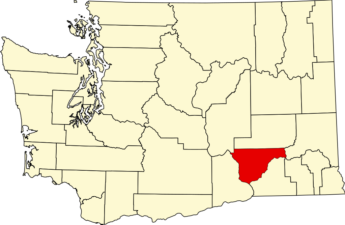As America gets grayer, advocates are pushing for new types of housing.

By Robbie Sequiera, Staff Reporter
Stateline
As older adults begin to outnumber young people in the United States in the coming decade, advocacy groups are challenging states to shift away from single-family zoning in favor of housing solutions that allow older adults to “age in place.”
By 2035, the U.S. will have more people over the age of 65 than under the age of 18, a first in the nation’s history. Recent census data suggests that the U.S. is short of aging-ready homes, with just 40% of the country’s housing considered accessible enough to meet the basic needs of older adults.
Organizations such as AARP are lobbying state by state for two housing approaches: the development of so-called middle housing such as duplexes, triplexes and townhomes, and the allowance of accessory dwelling units, often known as granny flats or in-law suites.
This year, some states overhauled the type of single-family zoning practices that advocates say have not aged well with the graying population.
Many older adults live in places where most residential lots are zoned for single-family detached homes, forbidding the construction of multifamily housing such as duplexes or condominiums. By prioritizing the construction of low-density development, such rules can disconnect older adults from their community and from crucial services such as transportation, according to the Urban Institute, a nonprofit think tank focused on social and economic policy.
As state lawmakers consider relaxing zoning rules to clear the way for more housing, advocates for older adults are taking part: lobbying legislatures, posting policy positions and speaking up at local zoning meetings.
“We don’t have housing that’s built for people of all ages,” Rodney Harrell, AARP’s vice president of family, home and community, said in an interview with Stateline.
We’re older than we used to be, especially in these states – Stateline story
While all populations stand to benefit from an increased supply of diverse and affordable housing, Harrell pointed out, more middle housing and a shift away from car-centric development would particularly help older adults on fixed incomes.
“A key issue is that a vast majority of our neighborhoods are exclusively single-family zoning,” he said. “That doesn’t leave a lot of housing options to meet the needs of our aging population.”
This year, Washington state overhauled single-family zoning statewide to pave the way for more middle housing — a move applauded by AARP as beneficial to the state’s older adults and their caregivers.
AARP Washington had been working with legislators and housing advocates on zoning changes for nearly a decade, said Cathy MacCaul, AARP’s Washington advocacy director.
Nationally, AARP has been pushing planning experts and local and state decisionmakers to conduct “code audits” to explore how to modernize zoning and code language.
In Vermont, a law passed this year, called the HOME Act, allows the development of duplexes in all single-family residential zones.
California, Maine and Oregon also have shifted away from single-family zoning. In 2019, Oregon became the first state to eliminate single-family zoning. Last year, California removed parking requirements for development near public transit to promote more housing construction in those areas.
And in Maine, legislators in 2022 began requiring municipalities to allow ADUs and duplexes to be built on land zoned for single-family housing.
Affordable Housing Push Challenges Single-Family Zoning – Stateline story
Few states have made such sweeping changes. But Jennifer Molinsky, project director of the Housing an Aging Society program at the Harvard Joint Center for Housing Studies, said advocacy for aging adults at the county and city levels — where most zoning decisions are made — is essential to creating more housing that is accessible for older adults.
“Zoning meetings may not be the most fun thing to do in a week. But it is where it’s happening. It’s where these decisions are being made,” said Molinsky. “Advocacy for aging at these meetings could go a long way in making sure [older adults] are being factored in these decisions.”
As the nation is aging, poverty among older people is rising. Among American adults age 65 and older, the poverty rate jumped from 10.7% in 2021 to 14.1% in 2022, according to a National Council on Aging analysis of U.S. Census Bureau data.
More than 10 million households headed by someone 65 or older spend more than 30% of their income on rent and utilities, according to the Urban Institute.
There aren’t enough homes these households can afford, Harrell said.
“We need to start to build these new types of housing now before we see this drastic demographic shift,” Harrell said. “It takes a while to build new housing. If we start now, we can get ahead of the affordability and supply crisis.”
By 2030, the country is set to face a shortage of accessible and affordable housing to meet the needs of the 1 in 5 Americans who will be over the age of 65, according to AARP.
A key issue is that a vast majority of our neighborhoods are exclusively single-family zoning. That doesn’t leave a lot of housing options to meet the needs of our aging population.
– Rodney Harrell, AARP’s vice president of family, home and community
Among the middle-style housing many advocates have supported are accessory dwelling units, often referred to as granny flats, mother-in-law suites or simply by the acronym ADUs. They might be built in basements, over garages or as separate, small buildings on the same lots as larger single-family homes.
The versatility of these units, MacCaul, AARP’s Washington advocacy director, told Stateline, allows older adults to live near their family or caregivers, keeping them connected to a support system.
A 2021 survey from the organization found that about three-quarters of adults 50 and over desire to stay in their current homes and communitiesand “age in place.”
“We use aging in place as kind of our North Star in terms of thinking about policy. The challenge is that a lot of states have systems that are not built for our aging population,” said MacCaul.
“Our housing system, our financing system and transportation infrastructure have not kept up with the aging population,” she said. “A majority of our systems have been built for young families, not the baby boomers who are now 60 and older.”
Governors Push Faster Construction to Meet Housing Needs – Stateline story
Washington state this year eased barriers to the construction of accessory-dwelling units such as owner-occupancy requirements and fees associated with their construction, while Montana legalized ADUs statewide.
“When we have zoning that restricts what we can build, where we can build and what we can build it, how can we solve this housing crisis?” said Montana state Rep. Daniel Zolnikov, a Republican who was among lawmakers pushing for changes. “Communities are meant to change. They can’t stay static and exclude people in a housing crisis.”
In Massachusetts, Democratic Gov. Maura Healey’s housing plan would override local zoning, requiring all municipalities in the state to allow homeowners to add ADUs. Maine cities and towns face a 2024 deadline to comply with state law and allow ADUs to be built alongside existing single-family homes.
North Carolina’s bipartisan effort to allow ADUs on single-family lots was motivated by a discussion that bill sponsor Rep. Matthew Winslow had had with his late mother. The House approved the bill last spring but it is pending in the Senate.
“Before she passed away, she said, ‘I don’t want to go into elderly care. I don’t want to go to a village or assisted living facility’ … so we allowed her to stay at our house,” said Winslow, a Republican.
“I imagine there are other families who would love to have their parents or in-laws with them, but these regulations on ADUs make it costly or frankly don’t allow it at all.”
Stateline is a nonpartisan, nonprofit news service of the Pew Center on the States that provides daily reporting and analysis on trends in state policy.


